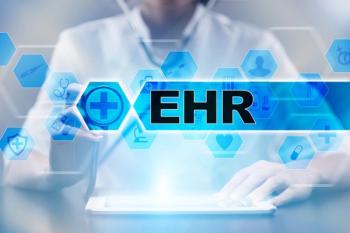
How AI can ease the burnout crisis
Physician burnout may be down, but AI-powered ambient listening and predictive analytics are still essential to lighten documentation loads and protect patient care.
A recent American Medical Association (AMA) survey revealed that 48.2% of physicians experienced at least one symptom of burnout last year. This represents a decrease from the 2021 peak of 62.8%, marking the first time in four years the rate has fallen below 50%.
While this decrease is encouraging, two critical points warrant consideration: 1) The elevated burnout rate during the COVID-19 pandemic makes a subsequent decline expected, and 2) A nearly 50% prevalence of burnout still signifies a substantial risk to patient care and clinician well-being.
The Agency for Healthcare Research and Quality (AHRQ) defines clinician burnout as “a long-term stress reaction marked by emotional exhaustion, depersonalization, and a lack of sense of personal accomplishment. According to AHRQ, “burned-out doctors are more likely to leave practice, which reduces patients’ access to and continuity of care. Burnout can also threaten
A particularly corrosive byproduct of
Causes—and effects—of clinician burnout
Numerous factors contribute to clinician burnout, including understaffing, heavy caseloads, interactions with payers (such as prior authorization requests and coverage denial appeals), and administrative tasks, often extending into personal time.
Electronic health record (EHR) systems, initially intended to reduce administrative burdens and enhance efficiency, have unfortunately not always achieved these goals. An AHRQ-funded study found that “fully mature EHR systems, especially with shorter [patient] visits, were associated with physician stress, burnout, and intent to leave the practice.”
Additional recent
The pervasive nature of clinician burnout has led healthcare organizations to emphasize EHR tools and workflows that alleviate documentation burdens as key recruitment incentives.
Drawing from my experience as a practicing physician, I understand the frustration of dedicating 30% to 40% of the day to documentation rather than direct patient interaction. I also have firsthand knowledge of how clinician burnout can negatively impact mental health and professional fulfillment.
We can—and must—do better
Despite these challenges, there is significant optimism as advanced technologies are proving effective in reducing burnout-inducing documentation burdens, benefiting both clinicians and patients.
For example, generative AI-based ambient listening frees up clinicians from having to take notes during and after visits with patients. Within approximately five seconds, this technology can generate a structured note from a clinical encounter transcript, allowing clinicians to review and edit for accuracy. This significantly reduces the time compared to traditional end-to-end documentation processes.
Indeed, recent studies indicate that ambient listening technology can reduce clinician documentation time by over 30%. This enables more meaningful patient interactions and a better work-life balance--significant advancements for clinical practice.
AI also can ease the time-consuming burden of finding information about a patient by physically sifting through a 15-inch stack of printouts or clicking through endless screens of information. With AI, healthcare organizations can give providers access to relevant information presented in an easy-to-read, organized format.
Predictive analytics is another AI technology that can help ease stress on clinicians and enable them to do their jobs more efficiently and effectively. Predictive analytics can surface insights about care gaps that could present a potential health issue for a patient. In addition, predictive analytics is useful for attaining compliance with incentive programs such as MIPS and enhancing clinical quality measure performance.
Unburdening—and empowering—clinicians
Clinicians are suffering from debilitating burnout for a multitude of reasons—but technology shouldn’t be one of them. By deploying AI-based tools, organizations can help clinicians save valuable time, give them more time for direct patient care and enable them to practice at the top of their licenses—which is why they entered healthcare in the first place.
Mark Pratt, MD, is Chief Medical Officer at Altera Digital Health
Newsletter
Optimize your practice with the Physicians Practice newsletter, offering management pearls, leadership tips, and business strategies tailored for practice administrators and physicians of any specialty.










